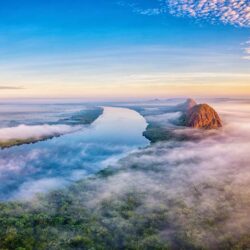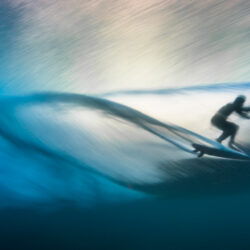Fujifilm X-E5

In summary
Fujifilm’s latest rangefinder camera, the X-E5 is similar in size to the popular X100VI and has many identical features but offers the versatility of an interchangeable-lens model.
Full review
Announced in early June, 2025, the X-E5 is the latest in the company’s mid-range, rangefinder-style mirrorless cameras. Similar in size to the endlessly backordered X100VI, it sports the same 40.2-megapixel X-Trans 5 HR sensor and processor and X-Processor 5 as used in that camera – and also in the X-T50 (which we haven’t reviewed), the X-T5 and the X-H2. This makes it capable of 6.2K/30p movie recording. While it has slightly better built-in stabilisation than the X100VI, it shares the same mostly metal body construction with a top plate carved from machined aluminium and classic analogue controls.

Angled view of the Fujifilm X-E5 camera (black version) with the XF23mm f/2.8R WR kit lens. (Source: Fujifilm.)
The fifth model in the X-E series has benefited from the latest technological advances and, like them it is offered in all-black and silver and black versions. We received the all-black version, which was supplied with the XF 23mm f/2.8R WR kit lens, which is reviewed separately. The camera will be available to purchase in Australia on 14 August, 2025.
Who’s it For?
Like its predecessors, the X-E5’s rangefinder-like body is made mainly from magnesium alloy with aluminium dials. This partly accounts for its comparatively high price tag. Designed primarily as a take-anywhere camera, its closest competitors are the X-T50 and the X100VI which have the same sensor and processor.
The X100VI has an integrated, 23mm f/2.0-f/16 lens that is marginally faster but limits the camera’s versatility. The table below compares the three cameras, highlighting their similarities and differences.
| X-E5 | X-T50 | X100VI | |
| Dimensions | 124.9 x 72.9 x 39.1 mm | 123.8 x 84.0 x 48.8 mm | 128.0 x 74.8 x 55.3 mm |
| Weight | 445 grams | 438 grams | 521 grams |
| IBIS | 5-axis sensor-shift, up to 7 stops | 5-axis, up to 6 stops | |
| Max. frame rate | 20 fps with electronic shutter & 1.29x crop; 8 fps with mechanical shutter | 20 fps with electronic shutter & 1.29x crop; 11 fps with mechanical shutter | |
| Buffer capacity | 168 frames JPEG, 66 frames RAF.RAW | 117 frames JPEG, 52 frames RAF.RAW | |
| Shutter type | Focal plane shutter | Leaf shutter | |
| Shutter speeds | 15 min-1/4000 sec. mechanical shutter / to 1/32000 sec. electronic shutter | 30-1/4000 sec. mechanical shutter / to 1/180000 sec. electronic shutter | 15 min-1/4000 sec. mechanical shutter / to 1/18000 sec. electronic shutter |
| Digital teleconverter zoom | Yes, 1.4x (50mm equivalent) and 2x (70mm equivalent) | ||
| Built-in flash | No | Yes (GN 3.9 (m/ISO 100) | Yes (GN 4.4 (m/ISO 100) |
| Flash sync. | 1/180 sec. or slower | 1/250 sec. or slower | All shutter speeds to 1/400 sec. |
| Focus system | Hybrid AF phase detect/contrast detect | ||
| AF points | 425 | ||
| Native ISO range | ISO 125–12800 | ||
| ISO extensions | ISO 64, 80, 100, 125, 25600 and 51200 for stills; ISO 25600 for movies | ||
| Max. internal video | 6.2K (6240 x 3150) at 25p | ||
| EVF | 2,360,000-dot OLED, 0.62x, 17.5 mm eyepoint, -4 to +2 dpt | 3,690,000-dot OLED, 0.80x, 24mm eyepoint, -5 to +3 dpt | |
| Monitor | Tilting, 3-inch, 1,620,000-dot touch screen | Tilting, 3-inch, 1,840,000-dot touch screen | |
| Media slot(s) | 1x SD, UHS-I/ USH II | 2x SD, UHS-I/ USH II | 1x SD, UHS-I/ USH II |
| Battery / CIPA rating | NP-W126 / 310-400 shots/charge | NP-W126s / 305-390 shots/charge | NP-W126S / 360-450 shots/charge |
| Weather sealing | No | Yes (when filter is attached) | |
| RRP on release | $2699 body only | $3199 body only | $2899 |
One feature of the new camera that is already attracting attention is the built-in Film Simulation dial, which has been created to allow faster access to the camera’s Film Simulation settings. Users can also use this control to customise the pre-sets and assign their own ‘recipes’ to the collection.
The hybrid autofocusing system that combines phase detection and contrast detection has been tried and proven in previous Fujifilm cameras. Thanks to the 40 megapixel sensor, it can operate down to a very dim -7EV in low-light conditions, while subject detection can recognise and lock onto humans, animals, birds, cars, bikes, planes and trains, aided by the X-Processor 5’s AI deep learning capabilities.
What’s New?
Aside from the new Film Simulation dial, there’s nothing really new on the X-E5 that hasn’t already appeared in another Fujifilm camera. It even includes the same 20 built-in Film Simulation modes as other Fujifilm cameras and is only different in the customisation options it offers.
The built-in sensor-shift stabilisation is basically the same as in the X-T5, although Fujifilm says it has an updated gyro to detect roll motion and a new algorithm to improve overall performance. However, camera shake correction is the same with up to seven stops in the centre of the frame and six at the periphery.
The viewfinder selector switch on the front of the camera is the same as the one on the X100VI and accesses the Surround View function, which displays a semi-transparent or outlined area outside the image so users can see what’s entering the frame. A new Classic Display mode for the EVF provides a clean viewfinder image with just the essential information (exposure mode, exposure settings and battery indicator) at the bottom of the frame.
The X-E5 also inherits the pre-shot mode from its predecessor, the X-E4. In this mode, the electronic shutter is used to record a series of frames when you half-press the shutter button. Pushing the button right down commits the last half second of recordings to memory.
Build and Ergonomics
Fujifilm has retained the rangefinder-like body styling of the previous models in the X-E line-up but reverted to the previous grip moulding on the front panel, which was eliminated in the X-E4. Fortunately, the textured leather-like cladding has been retained to minimise finger slippage and improve grip security but the camera body still isn’t weather-sealed.
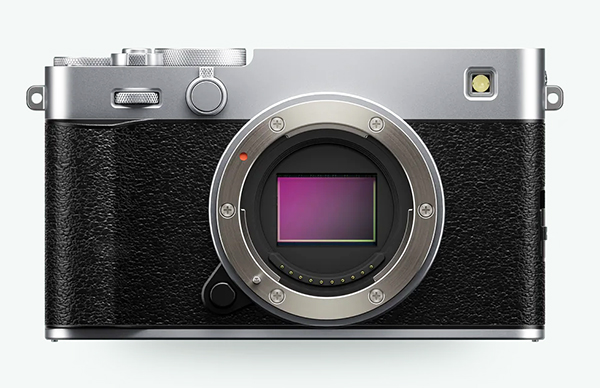
Front view of the Fujifilm X-E5 (silver version) with no lens fitted. (Source: Fujifilm.)
The only controls on the front panel are the semi-embedded front control dial, viewfinder selector switch and lens release button. Otherwise, the new camera retains the essential styling of previous models in the series.
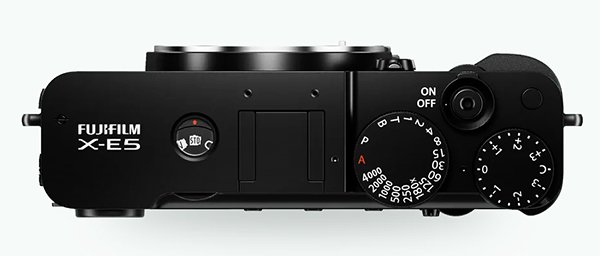
The top panel of the Fujifilm X-E5 with no lens fitted. (Source: Fujifilm.)
Likewise, aside from the embedded Film Simulation dial, the only difference between the X-E5 and its predecessor is the removal of the Q (quick menu) button, which has been relocated to the far right side of the rear panel, just down from the exposure compensation dial.
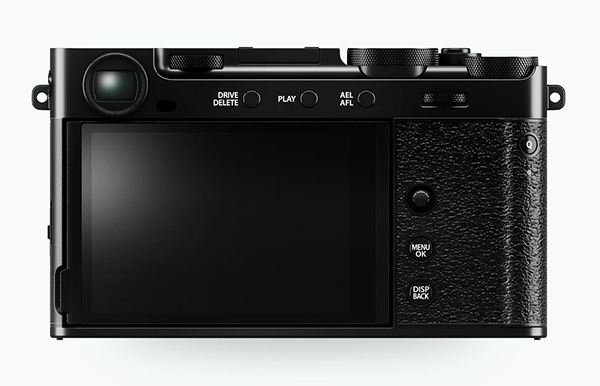
The rear panel of the Fujifilm X-E5. (Source: Fujifilm.)
The rear panel layout is almost identical to that of the X100VI, save for the Play button, which on the X-E5 has been moved from beside the screen to above it, between the Disp/Delete and AEL/AFL buttons. The monitor screen on the X-E5 has the same pull-out-and-tilt adjustments as the screen on the X100VI and both the screen and the EVF have the same resolutions.
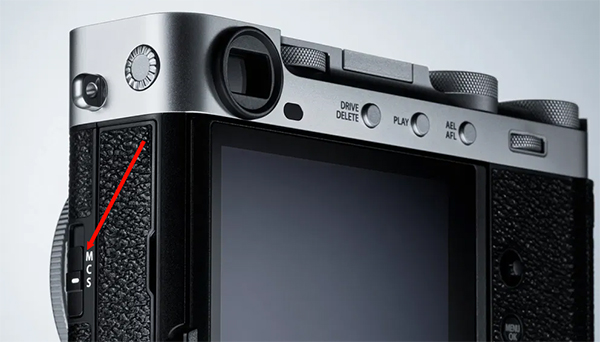
The left side panel showing the interface port cover and focus mode selector (indicated by the red arrow). (Source: Fujifilm.)
The focus mode selector is located on the left side panel, just in front of the interface ports, which are protected by a lift-up cover. Beneath it are the USB Type-C and HDMI Type D interfaces plus a 3.5mm stereo mini connector for a microphone or remote release.
The memory card and battery share a compartment accessed via the base plate. It has a locking cover but is quite cramped so cards can be tricky to extract when you’re in a hurry. The camera accepts regular SD cards and is compatible with both UHS-I and UHS-II Speed Class 3 cards.
Sensor and Image Processor
As noted, the sensor in the X-E5 is the same 40-megapixel chip as used in the X100VI, X-T5 and X-H2. All three cameras include a Digital Teleconverter setting in their shooting menus but the X100VI offers a wider range of options and different ways to access the function from the other two.
Like the X-T5, the X-E5 applies a crop factor to JPEG images but leaves the raw files uncropped. However, the application of the crop is recorded in the raw files’ metadata, which means when you open them in most raw file converters you’re shown the JPEG equivalent, cropped image.
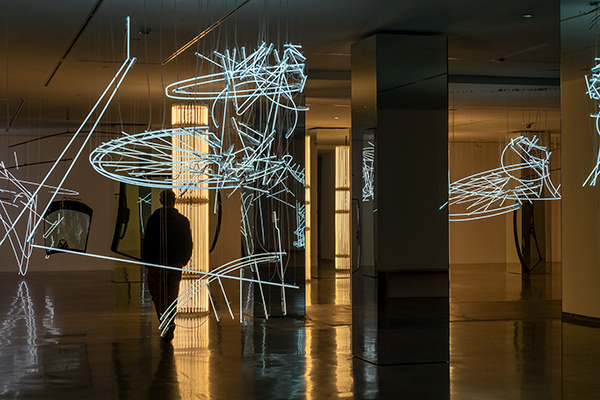
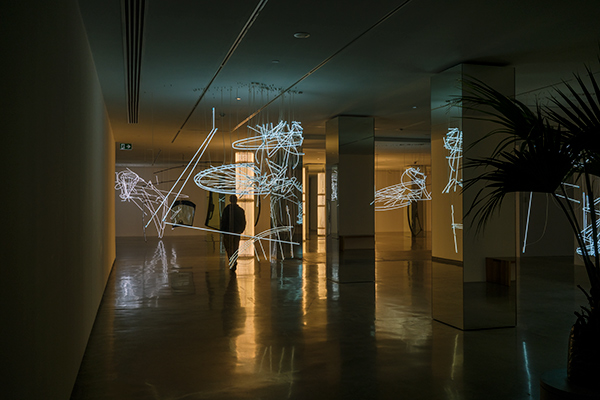
These two images show the cropped JPEG frame (top) and the uncropped raw image from which it was extracted when the 2x Digital Teleconverter mode is set for raw file capture.
You’ll probably need to search in the workspace of your raw file converter to find how to display the entire image frame that was captured. The frame grab below shows where the required controls are in Adobe Camera Raw.
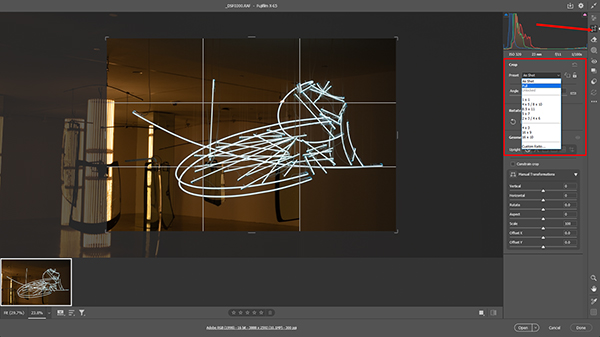
Aside from that, the sensor and processor in the X-E5 support a native ISO range of 125 to 12800 with extensions to ISO 25600 and ISO 51200 at the upper end of the scale and ISO 100, ISO 80 and ISO 64 at the lower. There are also three customisable ‘memories’ for storing auto ISO limits.
The X-E5 has a slower maximum shutter speed than the X-T5 with a top speed of 1/4000 second and its flash synch speed is also slower. It also lacks a Pixel Shift Multi-Shot mode for producing higher-resolution still images, although the drive options include a JPEG-only panorama mode that records a sequence of frames as you pan the camera across the scene, horizontally or vertically and them combines them to produce an elongated image.
Video
Video capabilities are almost identical to the X100VI’s, but Log support is limited to F-Log2 (whereas the X100VI also supports F-Log). Both cameras can output 12-bit RAW video to an external recorder in a choice of ProRes RAW or Blackmagic RAW formats. They also include a digital zoom function that utilises the resources of the sensor to provide up to 2x zoom with minimal loss of detail when recording in 4K resolution.
Like the X-E4 before it, the X-E5 offers two movie formats: MOV /H.264 with Linear PCM stereo audio and 24-bit / 48KHz sampling for the highest picture and sound quality and MP4 / H.264 with AAC audio for movies that will be uploaded to the internet. Movies recorded internally to the memory card are in 8-bit 4:2:0 quality but the camera can also output 10-bit 4:2:2 video to an external recorder via the HDMI port.
It also provides a focus peaking display plus zebra striping to gauge exposure levels along with dedicated movie mode settings with selectable movie frame rates, sizes and aspect ratios. F-Log and F-Log2 settings are available for enhanced dynamic range to provide more flexibility in post-processing, while the Film Simulation modes enable users to apply different looks to their footage.
The X-E5’s front control lever can be customised to control various functions, including:
– Digital Teleconverter: Quickly switch between OFF, 1.4x, and 2x digital teleconverter settings.
– Surround View: Toggle between black, semi-transparent, or outlined views of the area outside the frame.
– Aspect Ratio: Access an aspect ratio menu for quick changes.
Performance
We reviewed the X-E5 with the XF 23mm f/2.8R WR kit lens, which is reviewed separately. This lens is the closest equivalent to the lens built into the X100VI camera, although it’s a stop slower.
JPEG images recorded with the camera had natural-looking colour rendition and well-balanced saturation, both factors confirmed in our Imatest tests. Raw files were easily converted into 16-bit TIFF format with Adobe Camera Raw (our preferred converter), which provided plenty of scope for editing the resulting files.
The best JPEG images in our tests met expectations for the camera’s 40-megapixel sensor, although only around the centre of the frame. Resolution declined gradually towards the frame’s edges but remained relatively high to withing 70% of the frame. RAF.RAW files recorded simultaneously and converted with ACR provided resolution that was slightly higher overall but only just above expectations.
Resolution held up very well across the review camera’s sensitivity range, with a gradual fall-off for both JPEGs and RAF.RAW files as sensitivity was increased. JPEG resolution dropped sharply with the two highest ISO settings although only a little resolution was lost in equivalent raw files, as shown in the graph below.
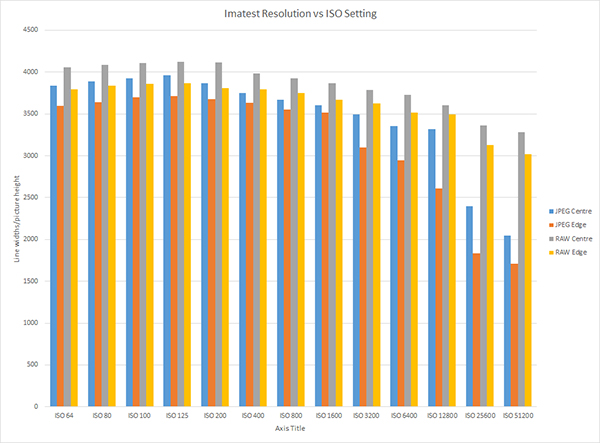
In our low light tests we found the review camera recorded a realistic-looking range of hues and tones through most of its ISO range. However, slight image softening became visible at ISO 3200 and by ISO 6400 the effects of noise had become more obvious.
By ISO 25600 the effects of noise were visible as both granularity and image softening, although colour reproduction remained constant up to that point. At ISO 51200 images took on a decidedly ‘mushy’ look with noticeable loss of detail and contrast plus subdued colour saturation.
Test shots showed the camera’s auto white balance to be capable of performing well when faced with a variety of light sources that included natural and artificial lighting and a mixture of both. All the images we shot with Film Simulation set to the standard Provia mode were essentially cast-free.
Our timing tests were carried out with a 64GB Lexar Professional SDXC II U3 card that is rated at 250MB/sec. The review camera took just over a second to power-up and slightly longer to shut down due to ‘sensor cleaning’.
We measured an average capture lag of 0.2 seconds which was eliminated when shots were pre-focused. Shot-to-shot times ranged from about 0.3 to 0.5 seconds, depending upon how fast as we could keep pressing the shutter button.
We used the LED indicator below the Q button on the camera’s rear panel to estimate processing times. Both JPEG and RAF.RAW files were processed in roughly one second on average and we found no significant differences in processing times for compressed and uncompressed raw files and even RAW+JPEG pairs.
Because of the camera’s large buffer capacity, we recorded bursts of approximately 10 seconds for our measurements. With the electronic shutter and the High-speed continuous mode, the camera captured 178 frames in 9.06 seconds, which was slightly under the specified 20 fps frame rate. It took 16.7 seconds to process this burst.
With the mechanical shutter the camera recorded 88 Large/Fine JPEG frames in 10.1 seconds without pausing, which is a little better than the 8 frames/second rate specified for the camera. It took 8.5 seconds to clear the buffer memory.
With raw file capture and the mechanical shutter, recording paused after 35 frames had been recorded, which took 4.2 seconds, also a frame rate a little faster than the specified 8 fps. It took 8.3 seconds to process this burst.
We also included the pre-shot recording mode in our timing tests and found the X-E5 buffered about half a second of recorded frames, which represented an average of 10 JPEG frames at the highest resolution and maximum frame rate. The camera applies a 1.25x crop by default, which is in line with its specifications.
Conclusion
Login or Register to access the full article.
SPECS
Image sensor: 23.5 x 15.7 mm X-Trans CMOS 5 HR sensor with 40.2 megapixels effective, primary colour filter
Image processor: X-Processor 5
Lens mount: Fujifilm X-mount
Focal length crop factor: 1.5x
Image formats: Stills: JPEG (DCF, Exif Ver. 2.32), HEIF 4:2:2 10-bit, RAF.RAW (14-bit), RAW+JPEG; Movies: MOV (H.264/MPEG-4 AVC), MP4 (H.264/MPEG-4 AAC), Long GOP compression
Audio: MOV: LPCM (2ch 48kHz/24-bit, 96kHz/24-bit) (4ch 48kHz/24-bit, 96kHz/24-bit); MP4: AAC (2ch 48kHz/16-bit)
Image Sizes: Stills (3:2 aspect ratio): 7728 x 5152, 5472 x 3648, 3888 x 2592; Panorama: 9600 x 1440, 6400 x 1440 (H), 2160 x 9600, 2160 x 6400 (V); Movies (PAL system): 6.2K at 25p, DCI 4K HQ (17:9) and 4K HQ (16:9) at 50p and 25p, Full HD (17:9) and Full HD (16:9) at 200p, 100p, 50p and 25p
Aspect ratios: 4:3, 3:2, 16:9, 1:1
Digital teleconverter: 1.4x, 2x, off
Image Stabilisation: Image sensor shift mechanism with 5-axis compensation; 6-7 stops shake correction; Digital IS available for movie mode
Dust removal: Ultra Sonic Vibration
Shutter (speed range): Focal plane shutter; (Mechanical 30 to 1/4000 seconds plus Bulb to 60 min; Electronic shutter: 30 to1/180000 second plus Bulb at 1 second)
Exposure Compensation: +/- EV in 1/3EV steps (+/-EV for movies)
Exposure bracketing: 2, 3, 5,7,9 frames in 1/3EV step, max. +/-3 EV
Other bracketing options: Aperture, Focus, White Balance, Film Simulation. ISO, White Balance, Dynamic Range
Self-timer: 2 or 10 seconds delay plus 10 sec, 3 sec& 5 sec delays for movies
Interval recording: Yes, for time-lapse (Setting : Interval, Number of shots, Starting time, Interval timer shooting exposure smoothing, Interval priority mode)
Focus system: Intelligent Hybrid AF (TTL contrast AF / TTL phase detection AF)
AF area selection: Single Point, Zone, Wide/Tracking, All; Automatic Detection for Human/ Animal/Bird/Automobile/Motorcycle & Bike/Airplane/Train
Focus modes: AFS (Single) / AFC (Continuous) / MF
Exposure metering: TTL 256-zone multi-pattern sensing system with Multi, Centre-weighted, Average and Spot metering patterns
Shooting modes: Program AE, Aperture Priority AE, Shutter Priority AE, Manual Exposure
Film Simulation modes: PROVIA/Standard, Velvia/Vivid, ASTIA/Soft, Classic Chrome, REALA ACE, PRO Neg.Hi, PRO Neg.Std, Classic Neg., Nostalgic Neg., ETERNA/Cinema, ETERNA BLEACH BYPASS, ACROS, ACROS + Ye Filter, ACROS + R Filter, ACROS + G Filter, Black & White, Black & White + Ye Filter, Black & White + R Filter, Black & White + G Filter, Sepia
In-camera effects: Grain Effect, Colour Chrome Effect, Colour Chrome Blue, Smooth Skin Effect, Dynamic Range adjustments, Clarity
Filter modes: Toy camera, Miniature, Pop colour, High-key, Low-key, Dynamic tone, Soft focus, Partial colour (Red / Orange / Yellow / Green / Blue / Purple)
Colour space options: sRGB and Adobe RGB
ISO range: Auto, ISO 125-12800 with extensions to ISO 64 and ISO 51200 for stills or ISO 25600 for movies
White balance: Auto (ambience/white priority settings), Daylight, Shade, Incandescent, Fluorescent (x3), Underwater
Flash: External flashgun (EF-X8)
Flash modes: 1st/2nd curtain sync, TTL AUTO / STANDARD / SLOW SYNC., Manual
Flash exposure adjustment: +/- EV in 1/3EV steps
Sequence shooting: Max. 20 frames/sec. with electronic shutter and 1.29x crop; 8 fps with mechanical shutter
Buffer capacity: Max. 168 Large/Fine JPEGs, 66 compressed RAW files, 21 uncompressed raw (>1000 frames with mechanical shutter)
Storage Media: SD, SDHC, SDXC cards (UHS-I / UHS-II UHS Speed Class 3 standard compatible)
Viewfinder: 0.39 inch OLED EVF with 2.36 million dots, 100% coverage, 17.5 mm eyepoint, -4~+2m-1 dioptre adjustment, 0.62x magnification
LCD monitor: 3.0 inch tilting touch screen colour LCD monitor with 1.04 million dots
Weather sealing: No
Interface terminals: USB Type-C USB 10Gbps, HDMI Type D, 3.5mm stereo mini connector for Microphone & Remote Release
Wi-Fi function: Built-in Wi-Fi (IEEE802.11a/b/g/n/ac); Bluetooth v4.2 (Bluetooth Low Energy)
Power supply: NP-W126S rechargeable Li-ion battery; CIPA rated for approx. 310 shots/charge (400 shots/charge in Economy mode)
Dimensions (wxhxd): Approx.124.9 x 72.9 x 39.1 mm (excluding protrusions)
Weight: Approx.445 grams with battery and card
RRP: AU$2699 (body only); $3049 (with XF23mm f/2.8 R WR kit lens)
Distributor: Fujifilm Australia; 1800 226 355
TESTS
Based on JPEG files recorded with the Fujinon XF 23mm f/2.8 R WR kit lens.
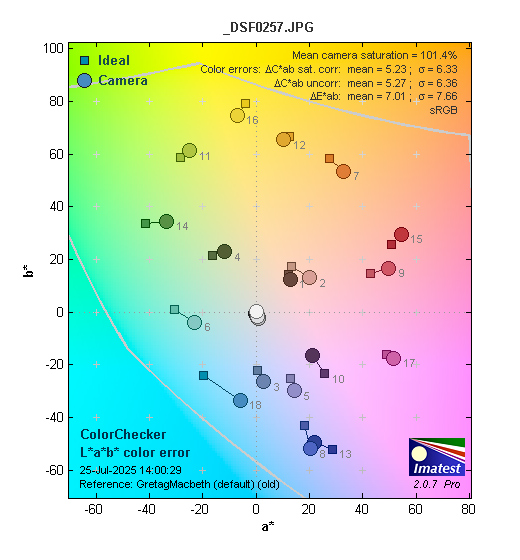
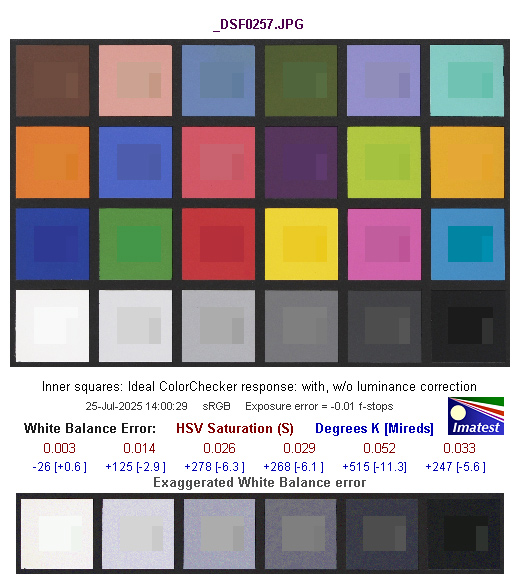




Based on RAF.RAW files recorded simultaneously and converted into 16-bit TIFF format with Adobe Camera Raw.
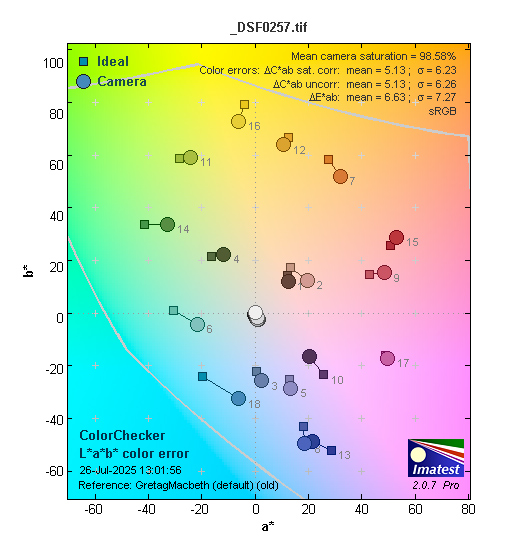
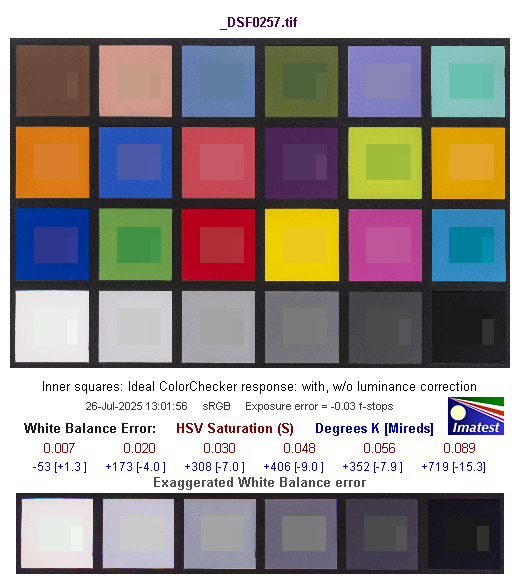



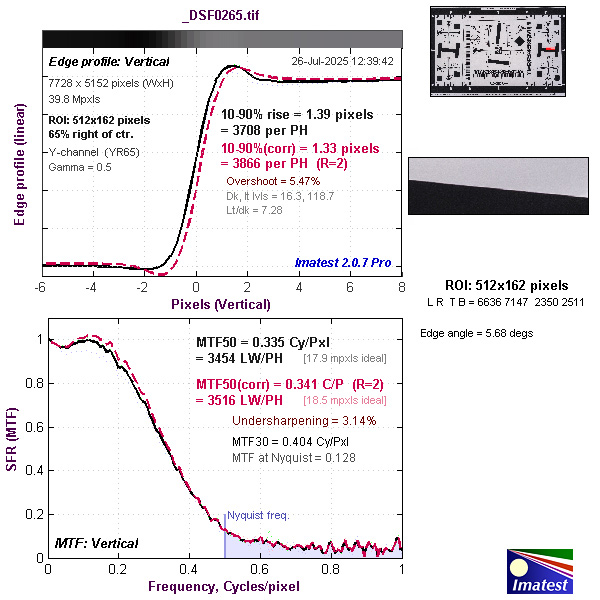
SAMPLES
All shots taken with the Fujinon XF 23mm f/2.8 R WR kit lens.
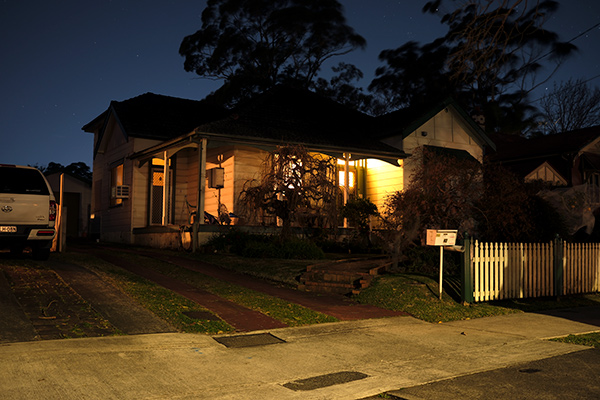
60-second exposure at ISO 64, f/2.8.
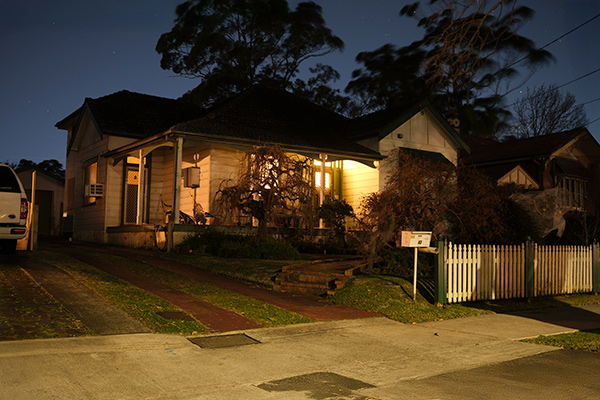
30-second exposure at ISO 125, f/2.8.
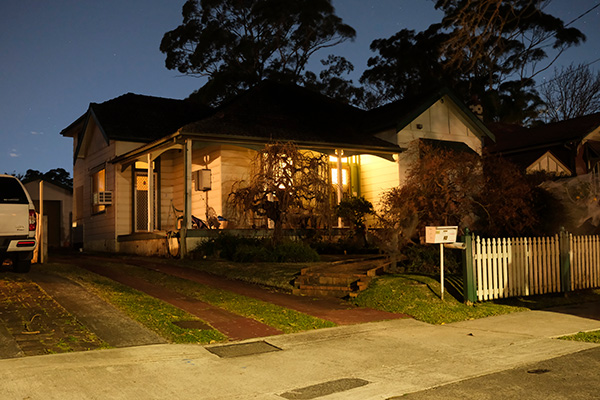
5-second exposure at ISO 3200, f/5.
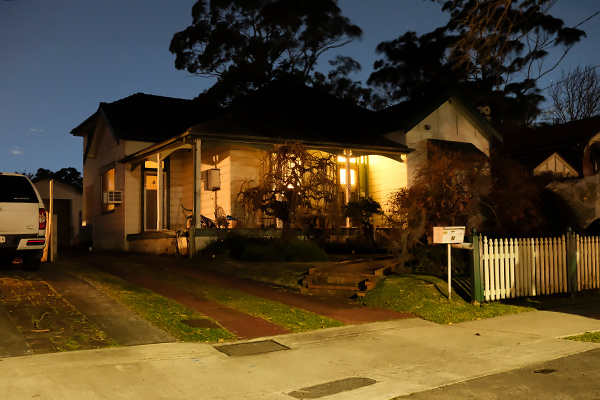
4-second exposure at ISO 6400, f/6.4.
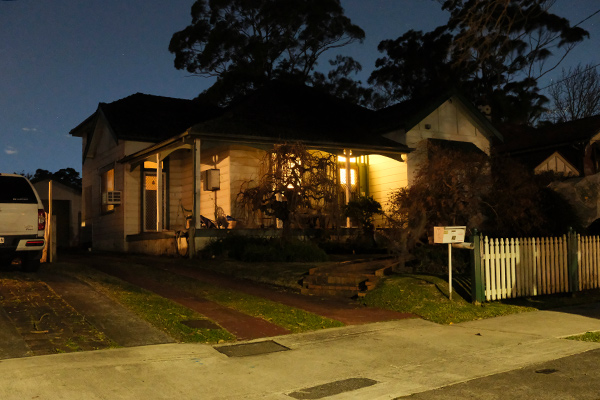
3-second exposure at ISO 12800, f/8.
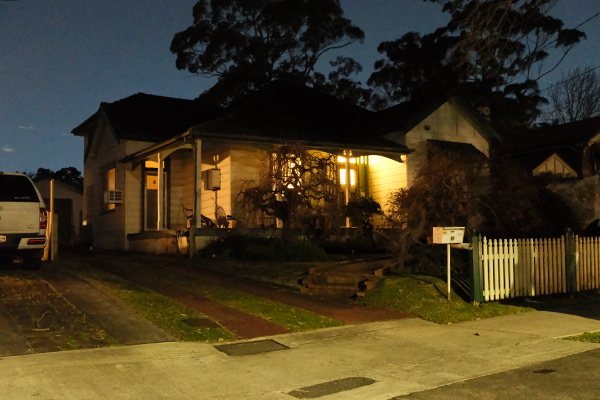
1.5-second exposure at ISO 25600, f/9.
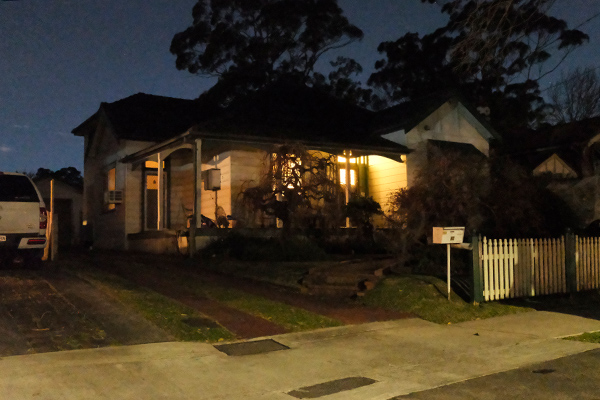
1-second exposure at ISO 51200, f/11.
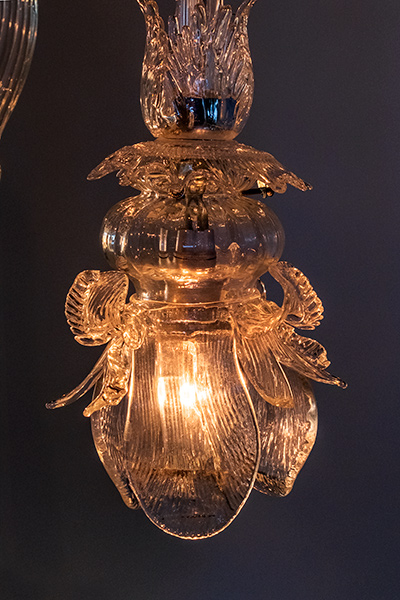
Close-up at f/2.8 in mixed artificial lighting;
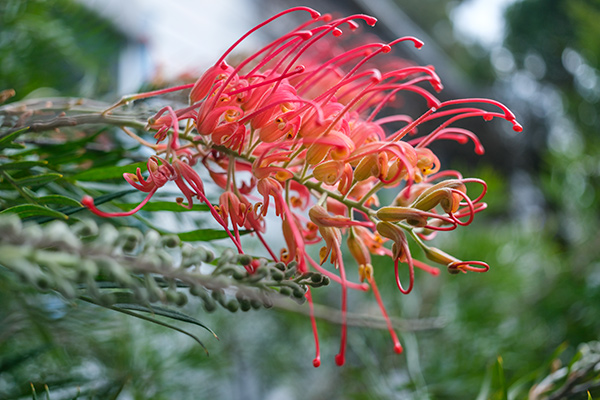
Close-up at f/2.8 with bright overcast lighting;
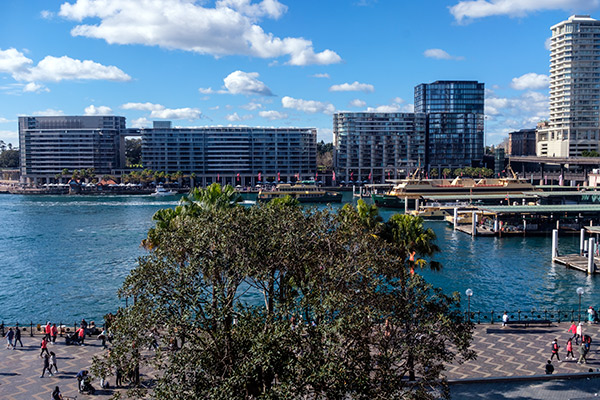
23mm focal length, 1/50 second exposure at ISO 320, f/8.
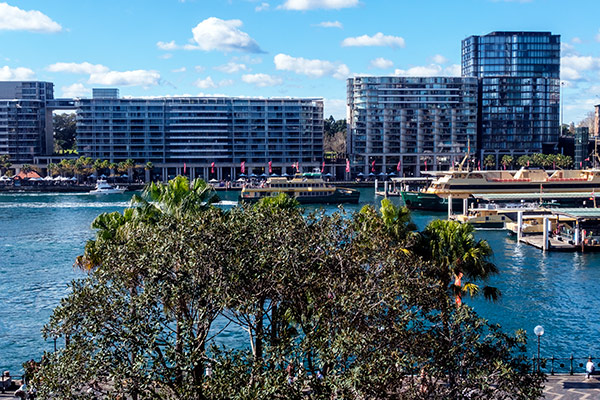
1.4x Digital Teleconverter zoom; 1/50 second exposure at ISO 320, f/8.
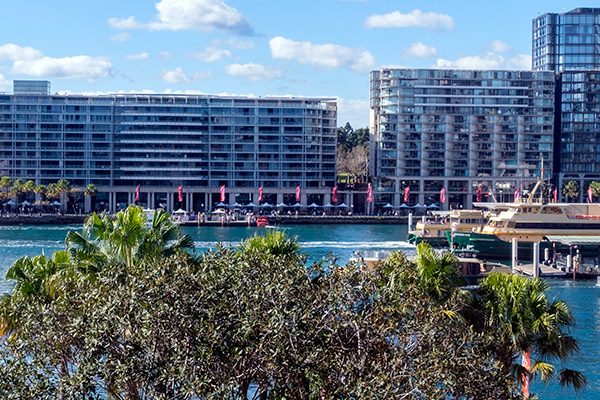
2x Digital Teleconverter zoom; 1/50 second exposure at ISO 320, f/8.
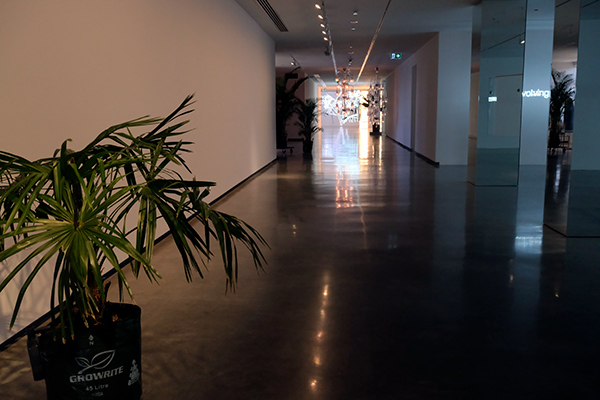
1/25 second exposure at ISO 320, f/8.
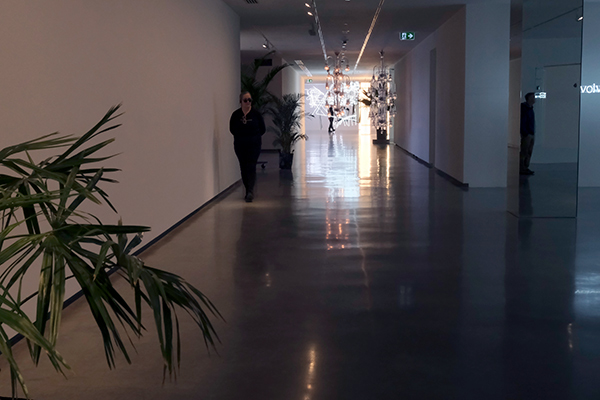
1.4x Digital Teleconverter zoom; 1/25 second exposure at ISO 800, f/8.
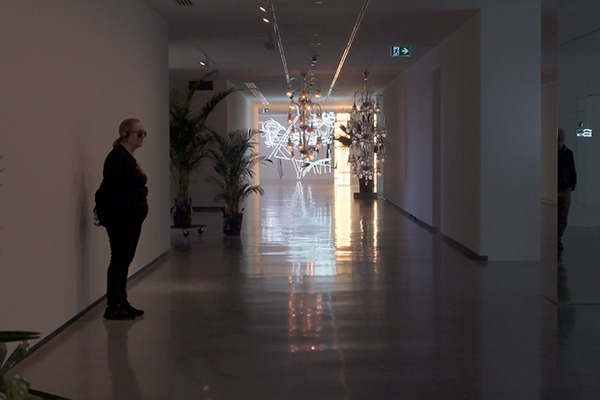
2x Digital Teleconverter zoom; 1/25 second exposure at ISO 640, f/8.
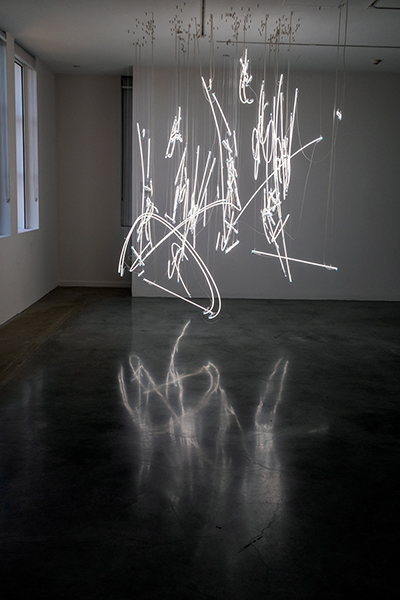
1/50 second exposure at ISO 640, f/8.
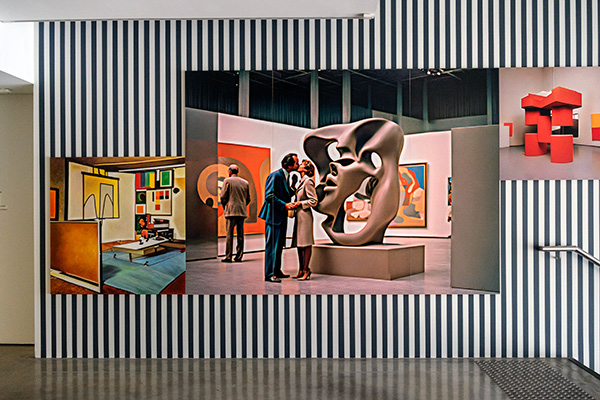
1/60 second exposure at ISO 1600, f/5.6.
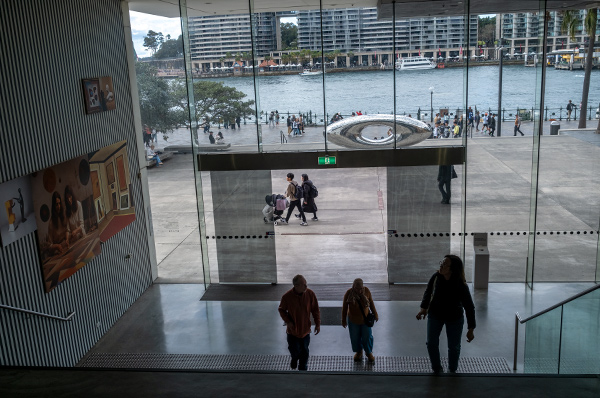
1/340 second exposure at ISO 250, f/5.6.
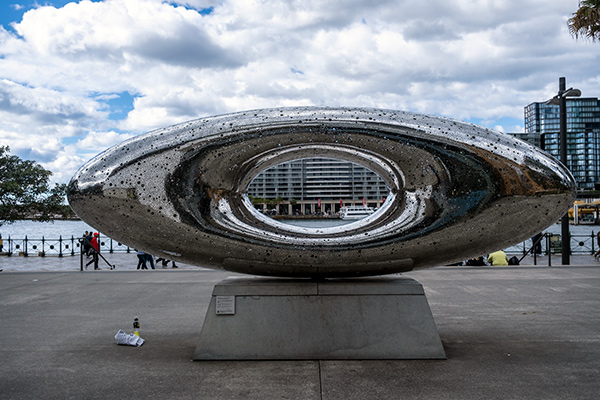
1/160 second exposure at ISO 160, f/4.
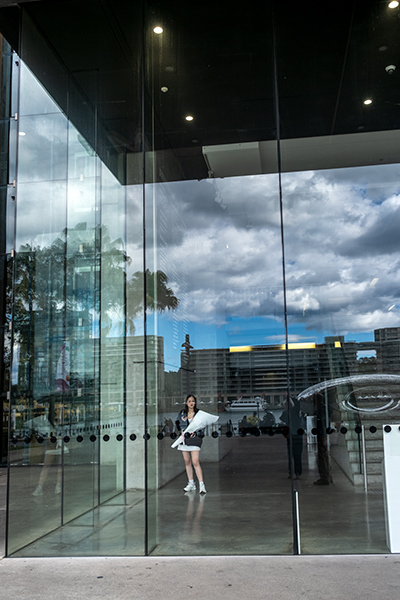
1/500 second exposure at ISO 125, f/6.4.
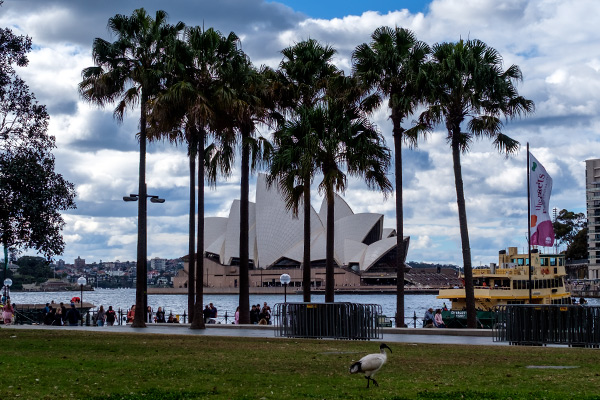
2x Digital Teleconverter zoom; 1/100 second exposure at ISO 125, f/7.1.
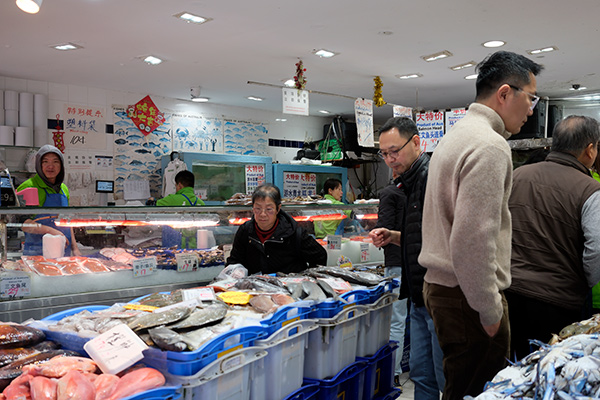
Mixed lighting; 1/150 second exposure at ISO 320, f/3.6.
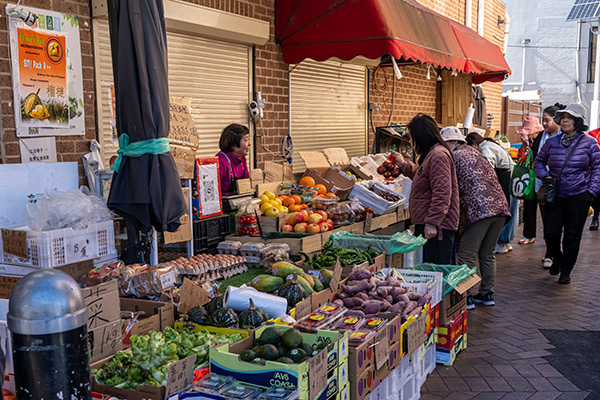
2x Digital Teleconverter zoom; 1/200 second exposure at ISO 250, f/4.5.

1/100 second exposure at ISO 125, f/2.8.
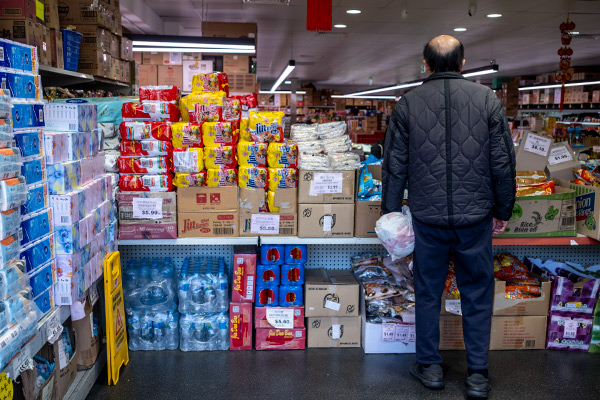
1/50 second exposure at ISO 320, f/2.8.

Still frame from 6K (6240 x 3510 pixels) video clip recorded at 25 fps.

Still frame from C4K (4096 x 2160 pixels) video clip recorded at 25 fps.

Still frame from 4K (3840 x 2160 pixels) video clip recorded at 25 fps.

Still frame from 4K (4096 x 2160 pixels) video clip recorded at 50 fps.

Still frame from Full HD (1920 x 1080 pixels) video clip recorded at 50 fps.

Still frame from 17:9 Full HD (2048 x 1080 pixels) video clip recorded at 50 fps.

Still frame from Full HD video clip recorded at 25 fps.
Additional image samples can be found with our review of the Fujinon XF 23mm f/2.8 R WR lens.
Rating
RRP: AU$2699 (body only); $3049 (with XF 23mm f/2.8 R WR kit lens)
- Build: 8.9
- Features: 8.8
- Ease of use: 8.8
- Autofocusing: 8.9
- Still image quality JPEG: 8.9
- Still image quality RAW: 8.9
- Video quality: 8.9
BUY







